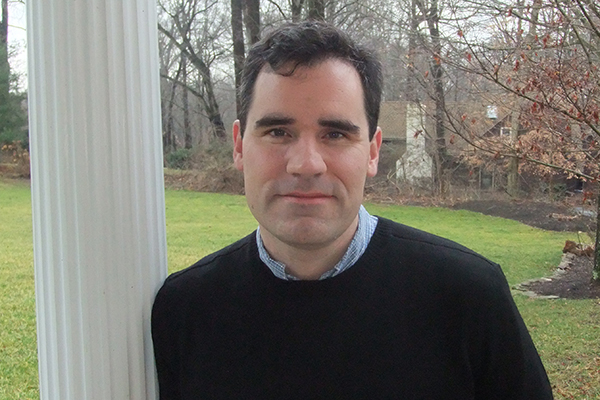


Lecture at MIT
May 16, 2016
UD's Fox discusses work in expanding field of bioorthogonal chemistry
The first research in the area now known as bioorthogonal chemistry — certain types of chemical reactions that occur inside living systems — was conducted about 15 years ago, but it’s already become known as an expanding field.
And it’s a field in which the University of Delaware’s Joseph M. Fox is in demand as a speaker.
Fox has been invited to speak on the subject numerous times in recent months, including delivering the Bristol-Myers Squibb Lecture in Organic Chemistry at the Massachusetts Institute of Technology in April. In that lecture and in other talks, he discussed new discoveries and applications in fast bioorthogonal chemistry.
Fox, who is a professor of chemistry and biochemistry and of materials science and engineering, also is director of UD’s National Institutes of Health Center of Biomedical Research Excellence on Molecular Discovery. His research focuses on the development of new types of chemical reactions that don’t occur naturally in biological systems.
Bioorthogonal reactions are chemical transformations that can proceed efficiently in living systems but without interference from the molecules found in nature.
Fox describes the reactions like this: Imagine taking the two chemicals needed for a particular reaction and injecting one into a person’s toe and the other into his finger. The two reagents will meet somewhere in the body, and the reaction will occur there.
Being able to develop these kinds of reactions, using materials that will react quickly in small quantities, is the key, Fox said.
“You can get many reactions to be fast if you’re swimming in reagents,” he said. “The trick is to get fast reactions with selectivity and at low concentrations.”
Fox and his team conduct fundamental research, but it has numerous applications in such areas as the imaging of cells, particularly proteins within cells; in making bonds between proteins to create new proteins; and as a tool in nuclear medicine and in materials science.
Possible pharmaceutical applications involve the use of bioorthogonal chemistry to understand how certain drugs interact with cells in the body and to tag proteins with radioactive tracers — both of which must be in low concentrations — to track them.
“What we want to do is find a needle in a haystack,” Fox said. “In this analogy, our body is the haystack, and the needle might be a cancerous cell. What we want to do is to target the needle without ruining the haystack.”
Contact Us
Have a UDaily story idea?
Contact us at ocm@udel.edu
Members of the press
Contact us at 302-831-NEWS or visit the Media Relations website

